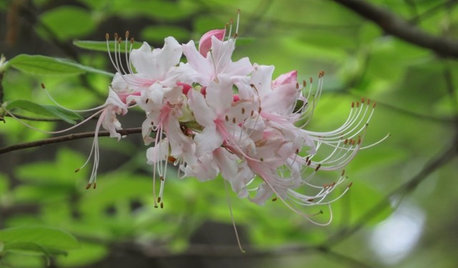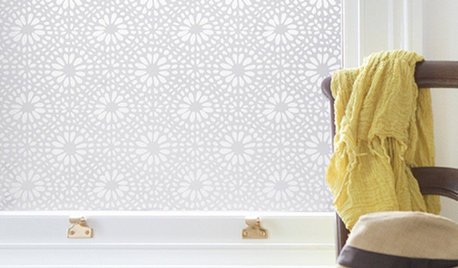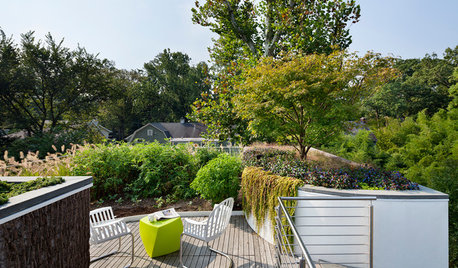please help rhododendron problem
Robes22
10 years ago
Related Stories

GARDENING GUIDESGreat Design Plant: Rhododendron Canescens
Have a damp, shady spot in your garden that needs a lift? This Southern U.S. native may be the solution
Full Story
LANDSCAPE DESIGNProblem Solving With the Pros: How to Build a Garden in an Urban Canyon
Skyscrapers, noise and deep shade create an unlikely sweet spot for a timeless green retreat in New York City
Full Story
GARDENING AND LANDSCAPINGBe a Citizen Scientist to Help Wildlife, Learn and Have Fun Too
Track butterflies, study birds, capture stars ... when you aid monitoring efforts, you’re lending Mother Nature a hand
Full Story
HOME OFFICESQuiet, Please! How to Cut Noise Pollution at Home
Leaf blowers, trucks or noisy neighbors driving you berserk? These sound-reduction strategies can help you hush things up
Full Story
GARDENING GUIDESGreat Design Plant: Ceanothus Pleases With Nectar and Fragrant Blooms
West Coast natives: The blue flowers of drought-tolerant ceanothus draw the eye and help support local wildlife too
Full Story
LIVING ROOMSA Living Room Miracle With $1,000 and a Little Help From Houzzers
Frustrated with competing focal points, Kimberlee Dray took her dilemma to the people and got her problem solved
Full Story
GARDENING GUIDESSolve 3 Common Landscape Problems — With More Plants
Sometimes the best defense is a good offense
Full Story
HOUSEKEEPING10 Problems Your House May Be Trying to Show You
Ignore some of these signs and you may end up with major issues. We tell you which are normal and which are cause for concern
Full Story
DECORATING GUIDESSolve Privacy Problems With Window Film
Let the light in and keep prying eyes out with an inexpensive and decorative window film you can apply yourself
Full Story
LANDSCAPE DESIGNProblem Solving With the Pros: Sustainable Landscape Captures Runoff
An underground cistern, permeable paving and a rain garden are part of this Washington, D.C. yard's thoughtful design
Full StorySponsored







Robes22Original Author
Robes22Original Author
Related Professionals
Garden City Landscape Architects & Landscape Designers · Grand Haven Landscape Architects & Landscape Designers · Allentown Landscape Contractors · Bethlehem Landscape Contractors · Damascus Landscape Contractors · Euclid Landscape Contractors · Hannibal Landscape Contractors · Madera Landscape Contractors · Mahwah Landscape Contractors · Northport Landscape Contractors · Oakland Landscape Contractors · Plantation Landscape Contractors · Saint George Landscape Contractors · Santa Ana Landscape Contractors · Woodland Landscape ContractorsRobes22Original Author
Robes22Original Author
akamainegrower
Sequoiadendron4
akamainegrower
Robes22Original Author
davidrt28 (zone 7)
davidrt28 (zone 7)
morz8 - Washington Coast
akamainegrower
Robes22Original Author
davidrt28 (zone 7)
rhodyman
akamainegrower
davidrt28 (zone 7)
rhodyman
davidrt28 (zone 7)
davidrt28 (zone 7)
rhodyman
Embothrium
davidrt28 (zone 7)